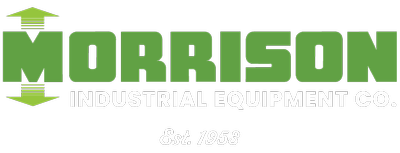When to replace, retain, relocate, or retire a forklift

Are you getting the most out of your forklift fleet? Have you evaluated whether each machine is a worthwhile investment? Could you be over- or under-equipped for your operational needs?
The Importance of Smart Fleet Management
A smooth-running operation depends on well-maintained, efficient equipment. Forklifts are essential, but managing a fleet comes with challenges—especially when it’s time to decide whether to keep, replace, or retire a machine. Making informed choices can help control costs, improve productivity, and ensure your equipment meets operational demands.
Key Factors in Forklift Decision-Making
When assessing your forklifts, two critical variables should guide your decisions:
- Utilization – How frequently and effectively is the forklift being used?
- Operating Costs – What are the costs associated with preventive maintenance, unplanned repairs, and productivity loss due to downtime?
By analyzing these two factors, you can categorize your forklifts and take appropriate action:
Retain: High Utilization, Low Operating Costs
If a forklift is used frequently and running efficiently without excessive maintenance costs, it’s a keeper. This machine is providing value and should remain in service.
Replace: High Utilization, High Operating Costs
A heavily used forklift with rising repair expenses might be nearing the end of its service life. Replacement is a smart move if maintenance costs exceed the cost of a new unit—especially since modern forklifts come with enhanced ergonomics, safety features, and energy efficiency that can boost overall savings.
Retire: Low Utilization, High Operating Costs
If a forklift isn’t used often but is racking up repair bills, it may be time to retire it. Consider reassessing your workload—perhaps another piece of equipment, like a walk-behind stacker, would be a better fit. Eliminating an underperforming machine can free up capital for more strategic investments.
Relocate: Low Utilization, Low Operating Costs
A forklift with minimal use and low expenses isn’t hurting your budget, but it might be more valuable elsewhere. Moving it to a less busy area—such as from the distribution zone to the production floor—can extend its useful life while maintaining efficiency across your operation.
Track Your Fleet Metrics for Better Decision-Making
Gathering and reviewing forklift data over time is essential for informed decision-making. A clear understanding of utilization and operating costs helps determine when to invest in new equipment and when to phase out older machines.
Managing a fleet manually can be time-consuming, but technology simplifies the process. Our Maintenance Logistics:MX program is an easy-to-use, free tool that provides detailed fleet reports and data-driven recommendations for equipment replacement, retirement, and relocation. Tracking your fleet metrics has never been easier.
Your Trusted Forklift Partner
When it’s time to purchase, lease, or rent a forklift, we’re here to help. We work with you to identify the best machine for your application, ensuring it fits both your operational needs and budget. Plus, our dedicated service team keeps your equipment running at peak performance for years to come.
Smart fleet management starts with the right tools and expertise. Let’s ensure your forklift fleet is operating at its full potential!
©
